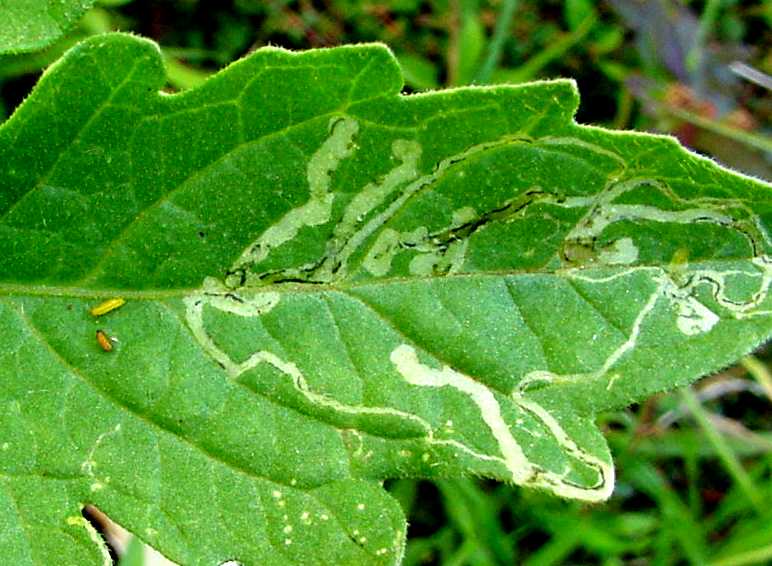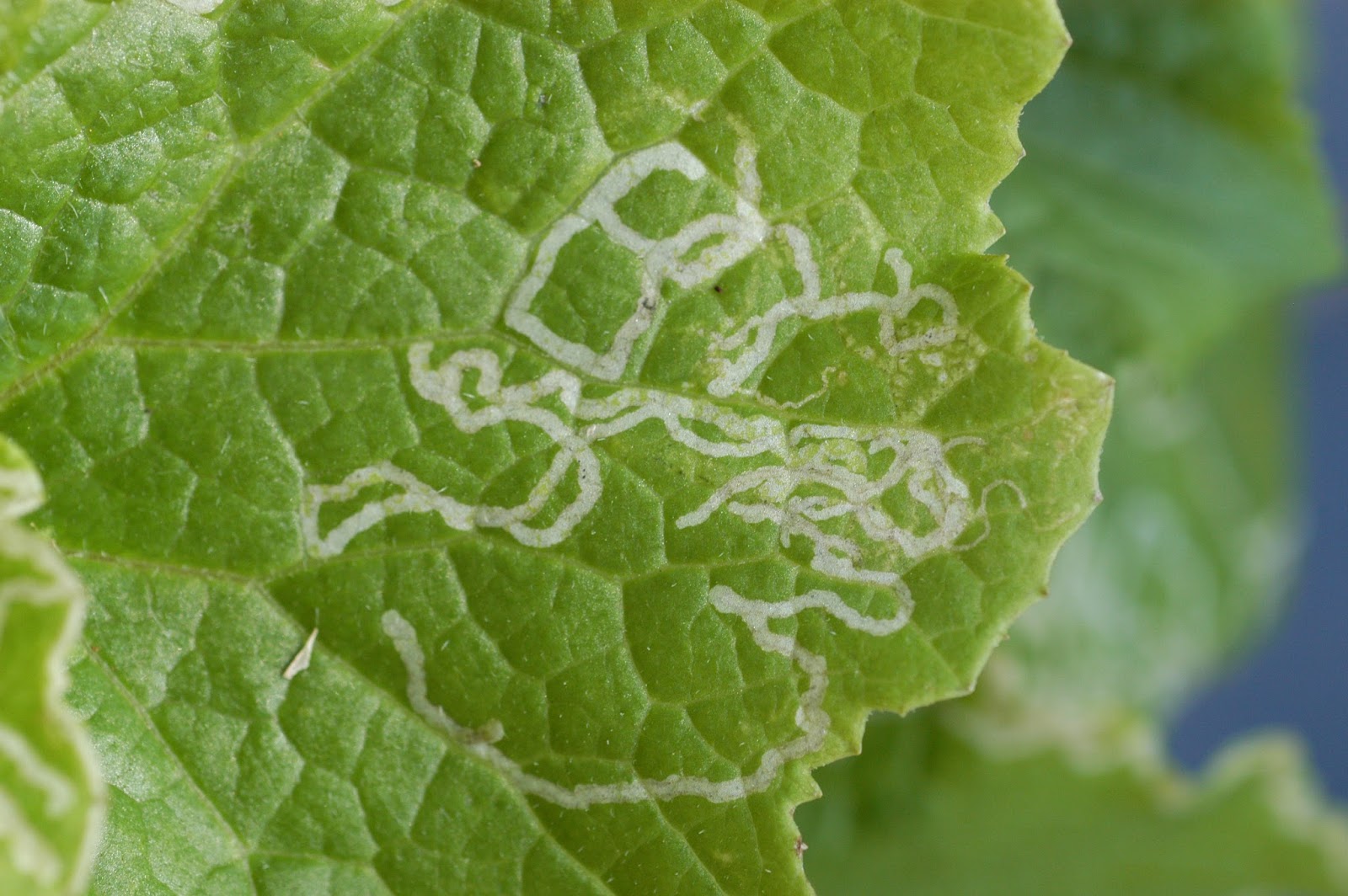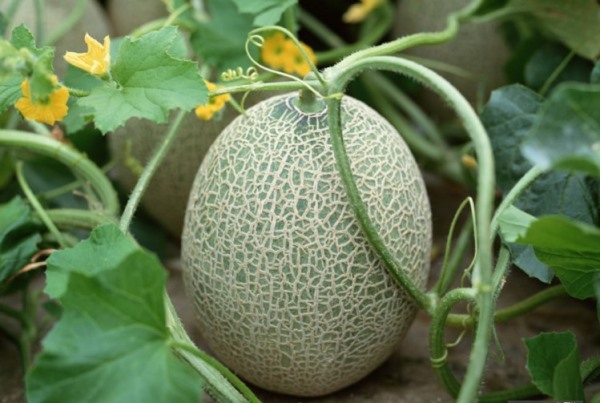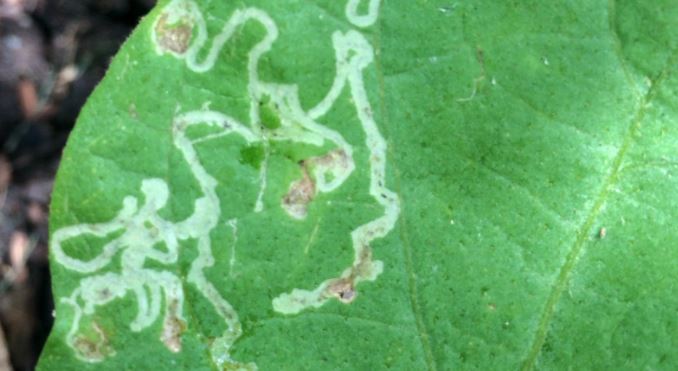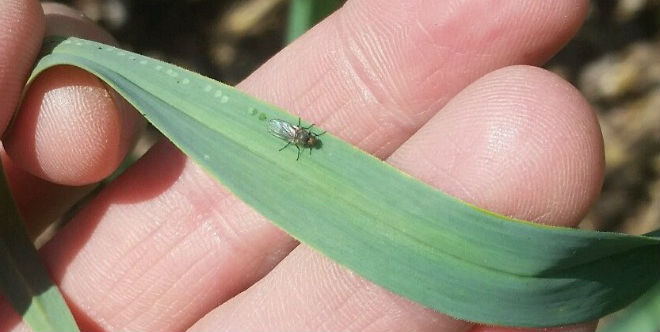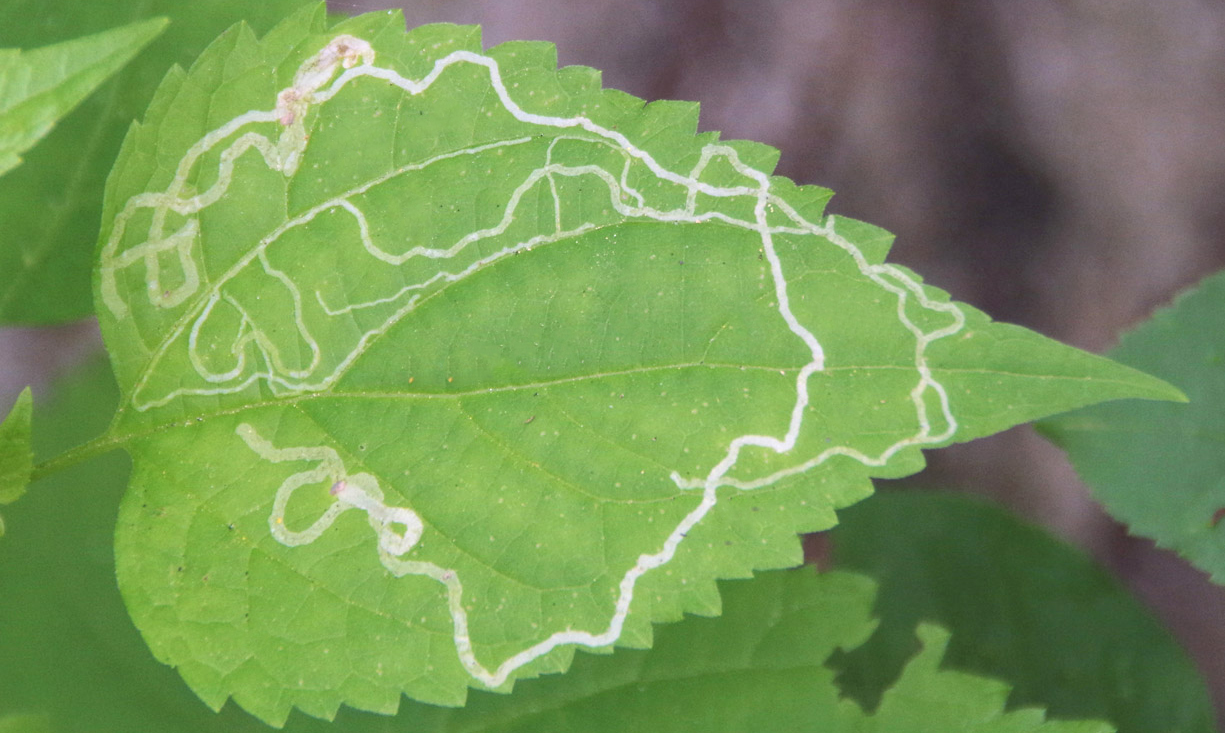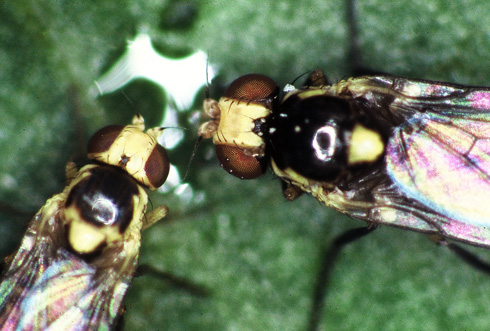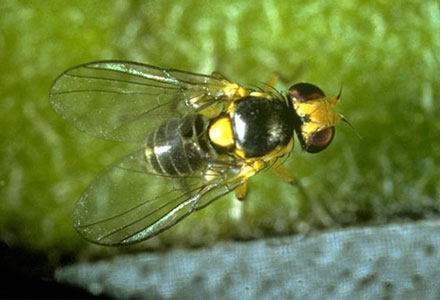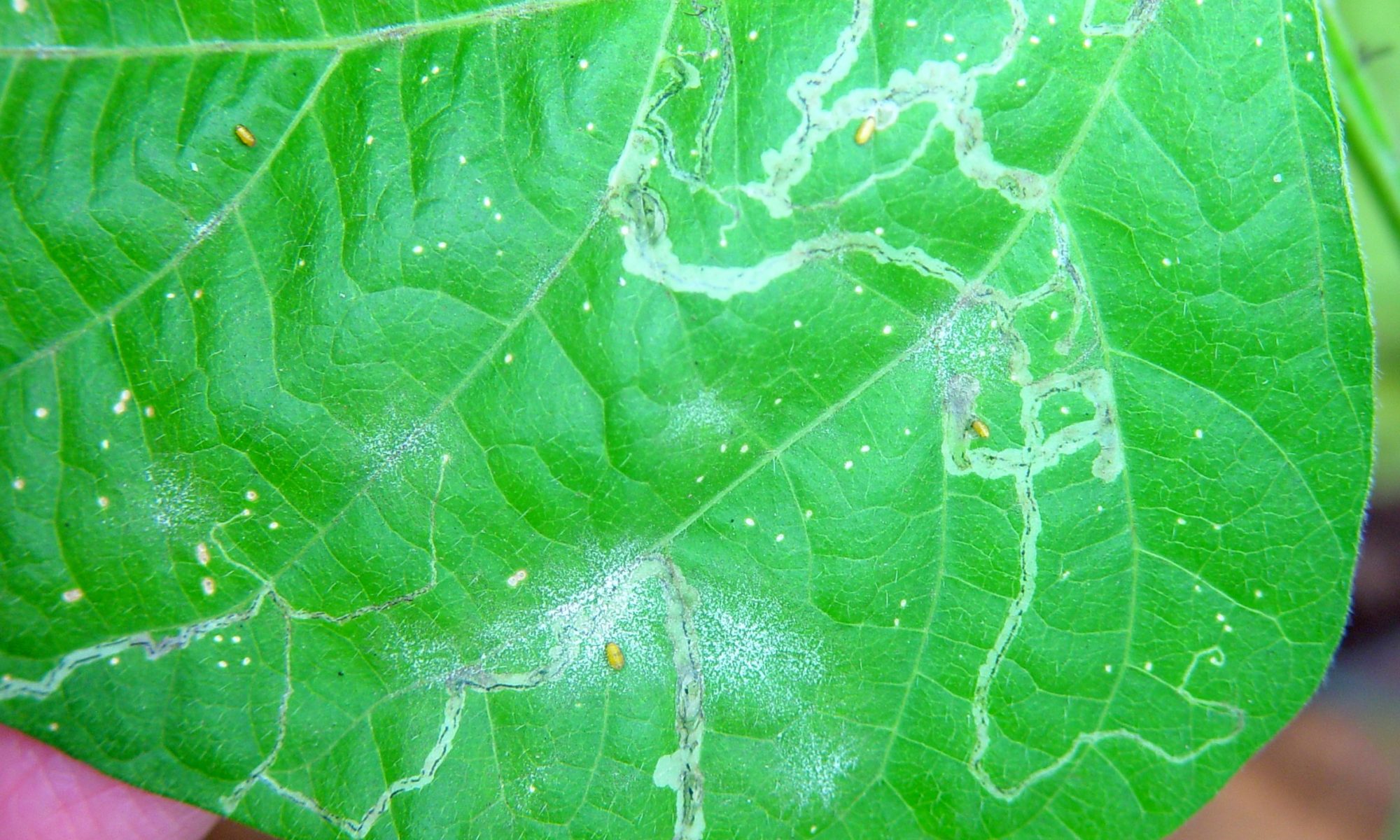- The adults of the leaf minor are dark colored.
- This insect invades the leaves of Sponge gourd.
- White zigzag stripes are formed on the leaves. This streak is caused by the caterpillar forming a tunnel inside the leaf.
- The plant stops growing and the plants remain small.
- The ability of pest-bearing plants to bear fruits and flowers is greatly decreased.
- Use of the following products is very important for its control.
- Spray Abamectin 1.9% EC @ 150 ml/acre or Profenophos 50% EC @ 500 ml/acre or Thiamethoxam 12.6% + Lambda cyhalothrin 9.5% ZC @ 80 ml / acre or Cyantraniliprole 10.26% OD @ 250 ml/acre.
Control of Leaf Miner in Cucumber Crop
- This adult form is a light yellow fly that lays eggs on the leaves.
- This causes white zigzag stripes on the leaves and the leaves to dry up and fall when there is more outbreak.
- Plants affected by leaf minors have a problem of fructification which reduces yield.
- For its control, spray Abamectin 1.8% EC @ 160 ml or Cypermethrin 4% EC + Profenophos 40% EC 400 ml with organic beauveria bassiana 5% WP 500 gm per acre in 200 liter water.
Attack of leaf miner in Ridge gourd
- Its adult is a light yellow fly that lays eggs on the leaves.
- Its adult is a light yellow fly that lays eggs on the leaves.
- White zigzag lines are formed on the leaves and leaves dry out and fall when there is more outbreak.
- Problems of function are observed on the affected by this pest, which reduces the yield.
- Remove the weed from the field and its surroundings.
- To prevent this, spraying Abamectin 1.8% EC @ 160 ml/ acre or Cypermethrin 4% EC + Profenophos 40% EC 400 ml / acre.
Controlling leaf miner can increase production in melon crop
- Affected plants during the growing season to be withdrawn and destroyed.
- Spray Wapkill (Acitamprid) @ 100 gm/acre or
- Confidor(Imidacloprid ) @ 100 ml + 250 gram beauveria bassiana/acre or
- Spray Thiamethoxam 12.6% + Lambda Cyhalothrin 9.5% ZC @ 100gm/acre or
- Spray Abacin (Abamectin 1.8% EC) @ 150 ml/acre
Identification of leaf miner on muskmelon crop –
- Adults leaf miners look like small black and yellow flies.
- Larvae exit from the leaf after completion of their development and then pupate axles on plants.
- Females puncture the leaf to feed plant sap and lays eggs within the leaf tissue.
- This damage restricts the plant growth and results in reduced bulb yield and loss of vigour.
- Tunnels or mines can be seen in the leaves.
Chemical management of leaf miner on garlic crop
- Affected plants during the growing season to be withdrawn and destroyed.
- Spray Wapkill (Acitamprid) @ 100 gm/acre or
- Confidor(Imidacloprid ) @ 100 ML/acre or
- Evident (Thaimethoxam ) @ 5 gm/pump or
- Abacin (Abamectin 1.8% EC) @ 150 ML
Identification of leaf miner
- Adults are small black and yellow flies.
- Larvae exit from the leaf upon completion of their development and pupate in the soil or in the leaf axils on plants.
- Females puncture the leaf to feed plant sap and lays eggs within the leaf tissue.
- The damage restricts the plant growth, results in reduce bulb yield and loss of vigor.
- Tunnels or mines can be seen in the leaves.
Control of leaf miner in pea
- Spraying of systemic insecticide like
- Deltamethrin 2.8% EC @ 200 ml/acre or
- Triazophos 40% EC @ 350-500 ml/acre. Or
- Chlorpyrifos 20%EC @ 500 ml/acre or
- Cartap Hydrochloride 50 % SP @ 250 gm/ acre are recommended.
Like and share with other farmers by clicking on the button below
ShareLeaf miner in pea
- Adults are dark metallic green in color.
- Pea leaves are attacked by Maggots which makes prominent whitish zigzag lines in the leaves.
- The growth is stunted. The flowering and fruiting capacity of infested plants is adversely affected.
Like and share with other farmers by clicking on the button below
ShareControl of leaf miner in cowpea
- Maggots are feeding the leaves in a zigzag shape.
- The infestation of this fly can easily be recognized by the presence of shiny whitish streaks on the leaves against the green background.
- The flowering and fruiting capacity of in infested plants is adversely affected.
- Spraying of systemic insecticide like Deltamethrin 2.8% EC @ 200 ml/acre or Triazophos 40% EC @ 350-500 ml/acre.
Like and share with other farmers by clicking on button below
Share

